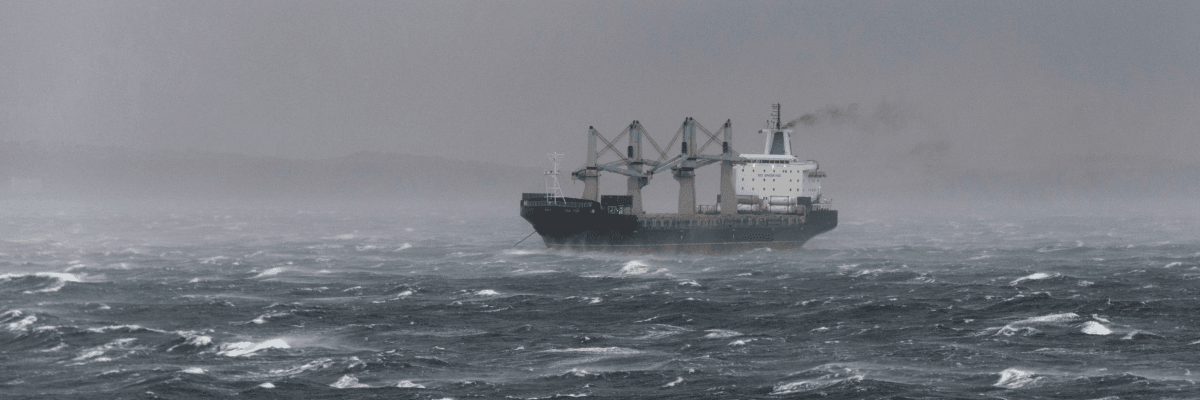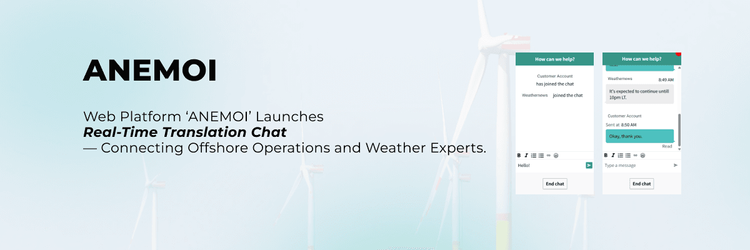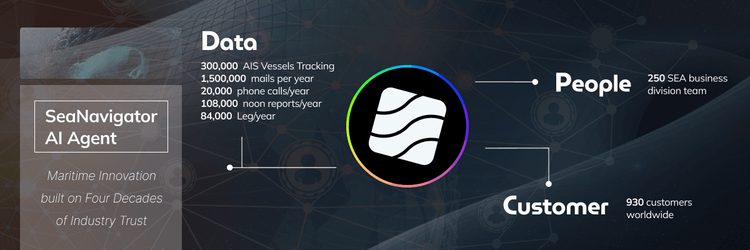Evolving Customer Demands Drive Maritime Solution Innovation
Our customers' voices have consistently shaped our maritime navigation solutions, reflecting the industry's changing priorities across all shipping segments.
Safety First: Maritime operators—from tankers and bulkers to container ships and PCTCs—initially approached us with a fundamental concern: "We're losing ships and lives to severe weather conditions. We need better weather intelligence to prevent these tragedies." This urgent demand led to our Weather Routing services focused on storm avoidance and life preservation.
Economic Efficiency: As economic pressures intensified, customer requirements shifted dramatically. With fuel costs representing 50-60% of total voyage operating expenses—up to 70% for container ships—operators began expressing: "Safety is crucial, but we also need to optimize fuel consumption. Even a 1% improvement in fuel efficiency could save us hundreds of thousands of dollars annually." This feedback drove us to develop Optimum Ship Routeing (OSR) and Performance Monitoring Status (PMS), balancing safety with economic efficiency.
Triple Bottom Line: Today's customers across all vessel types demand: "We need solutions that simultaneously ensure crew safety, maximize profitability, and meet strict environmental regulations." These voices reflect new realities including climate change concerns and stringent compliance requirements.
Our Response: Our service evolution directly mirrors these changing needs. What began as life-saving weather routing has transformed into comprehensive voyage optimization delivering safety, profitability, and environmental compliance in one integrated solution for all vessel types.
What is Optimum Ship Routeing (OSR) & Performance Monitoring Status (PMS)?
Optimum Ship Routeing (OSR) is a voyage planning and optimization service that recommends the best route and speed for a specific ship based on weather forecasts, ocean conditions, ship performance characteristics, and business priorities.
Drawing from over 1 million supported voyages, OSR plans your voyage based on your priority—fastest safe arrival, least fuel consumption within safe parameters, specific ETA, or minimum total cost—using performance models refined through decades of operational data across vessel types. Safety remains the primary filter: routes that compromise vessel or crew safety are never recommended, regardless of efficiency gains.
What Makes it "Optimum":
Routes are customized for YOUR specific needs:
- Vessel characteristics: Performance profiles, hull form, speed-consumption curves
- Business priorities: Fastest arrival vs. minimum fuel vs. specific ETA vs. lowest cost
- Operational constraints: Charter terms, port availability, regulations
The same voyage might receive different recommendations for different ships or priorities—but all stay within safe operating limits.
PMS (Performance Monitoring Status) provides Charter Party-based compliance monitoring and vessel efficiency analysis, delivering auditable reports with multi-source weather verification and simulation capabilities to optimize both operational performance and commercial decision-making. PMS tracks actual performance against OSR's predictions throughout the voyage, providing comprehensive verification for charter party compliance and regulatory reporting.
In short, OSR is your plan and execution. PMS is your proof. Why both? Because a plan without verification leaves you exposed to disputes. And monitoring without accurate predictions doesn't improve future performance.
But how do we know these optimizations actually work? The answer lies in our proven track record of forecast accuracy.
Forecast Accuracy: How OSR+PMS Improves Performance Predictions
When combining OSR+PMS, you can achieve:
- 12% better speed prediction accuracy
- 40% better fuel consumption forecasting
These numbers are based on three factors:
- Vessel type-specific modeling: Performance models built from operational data across vessel classes, not generic assumptions about "bulk carriers" or "container ships."
- Continuous data refinement: With 84,000 voyage legs monitored annually across multiple vessel types, OSR's models continuously improve in predicting how different vessel classes perform in specific conditions.
- Multi-source verification: PMS validates every prediction against actual conditions using four independent weather sources, creating a feedback loop that refines future forecasts.
Proven Results: When Adding Miles Saves Fuel
Case study
Route: Balboa, Panama → Taipei, Taiwan (Container vessel)
Objective: Route optimization for the quickest arrival while avoiding severe weather conditions.
OSR/Weathernews recommendations: Southern diversion to 30°N route instead of the planned 40°N route.
- Master's planned route: 40°N (6,842 nautical miles)
- OSR recommended route: 30°N (6,980 nautical miles: 138 nm longer)
How could adding 138 nautical miles result in lower fuel consumption and faster arrival?
Avoiding severe weather conditions allows vessels to maintain more efficient speed and consumption rates. While the southern route added distance, it avoided weather that would have required a significant speed reduction and increased fuel consumption on the shorter northern route.
Comprehensive coordination between Weathernews’ Risk Communicators (Voyage Planners), Master, shoreside operators, and fleet management to evaluate and implement the routing plan.
PMS’s Impact: Ongoing verification of performance decisions against encountered conditions throughout the voyage.
Result:
- Route distance: Added 138 nautical miles
- Fuel consumption: Saved 89 MT fuel oil
- Verification: PMS's detailed reporting confirmed the effectiveness of OSR's routing recommendations.
The Future of Integrated Maritime Intelligence
The maritime industry's evolution from basic weather avoidance to comprehensive voyage optimization reflects a fundamental shift: today's operators need integrated solutions that deliver safety, efficiency, and compliance simultaneously.
OSR and PMS represent this integrated approach—intelligent planning backed by verifiable performance data. When a route can add 138 nautical miles yet save 89 MT of fuel while ensuring faster arrival, it demonstrates the power of data-driven decision making over traditional navigation.
As environmental regulations tighten and economic pressures intensify, the question isn't whether your vessels need better routing. It's whether you can afford to operate without the insights that turn every voyage into actionable intelligence for the next one.
Don't let your next voyage operate on assumptions. Discover how data-driven routing can save fuel, ensure compliance, and prove performance.



